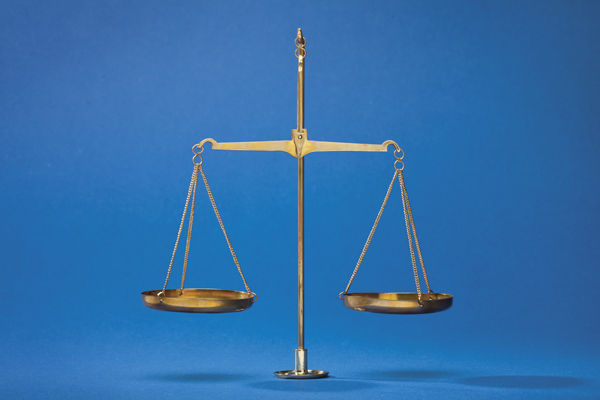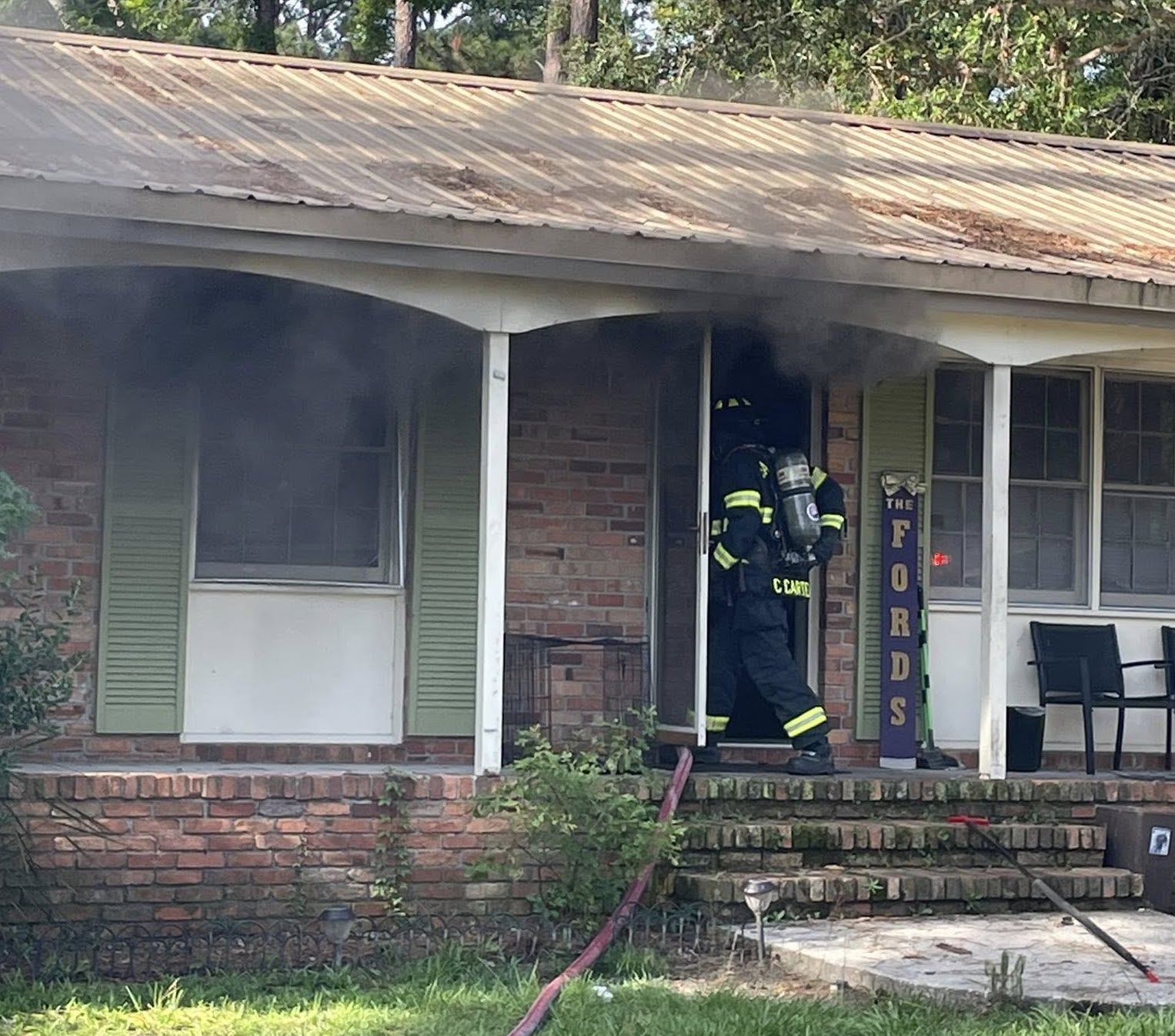‘KJ’ case: A Year Later
Published 6:00 am Saturday, January 11, 2014

- Valdosta State University students chant and hold signs at the entrance of Lowndes High School, demanding the release of video surveillance tapes depicting Kendrick Johnson’s death in this October 2013 photo.
A year has passed, and the family of Kendrick Johnson still wants answers about how the 17-year-old died, only to be discovered inside a rolled-up wrestling mat inside Lowndes High School’s old gym.
Meanwhile, a deadline nears for the $10,000 reward to compel someone to come forward with information in the case. To this point, there’s been nothing credible enough to pass along to authorities, said the Rev. Floyd Rose, president of the Valdosta-Lowndes chapter of the Southern Christian Leadership Conference.
Rose held a press conference in October to announce the reward for information leading to a conviction in the teen’s death. He said he represents an anonymous source offering the money, which came with a caveat: It was offered for 90 days, or until Jan. 19.
Without information for the case, Rose said he expects the reward to be withdrawn. Rose said he believes if someone was hiding something in Johnson’s death, the reward would uncover it.
Since Kendrick Johnson’s body was discovered a year ago today – on Jan. 11, 2013 – authorities have maintained he died an accidental death as he reached for a pair of shoes he stored inside the gym mats. The state autopsy determined his cause of death to be positional ashyxia.
Johnson’s family believes he died as the result of foul play. They’ve spent the year protesting the state’s finding and pointing to a second, independent autopsy that noted trauma to Johnson’s neck and ruled his death non-accidental.
A year later, an federal review into the teen’s death is ongoing, and the case remains unresolved.
A Year Ago Today
Known was “KJ,” Johnson’s body was discovered when students were completing surveys for a second block gym class.
Wrestling mats that had been rolled up for storage were lined vertically against the south corner wall of the gym. Students had crawled onto the top of the mats from a nearby set of bleachers. They were the first to see the white socks of Johnson’s feet inside the mat.
Their teacher, Phillip Pieplow, was unable to pull Kendrick from the mat. Students started calling 911 while Pieplow and a student moved other mats to reach the one encasing the teen’s body.
“I don’t think anyone can help him,” Pieplow told Lowndes County Sheriff’s Deputy Kerry Quinn when Quinn arrived at the scene, according to the investigative case file.
Waiting has played a large role in the events since then.
First, there was a wait for the coroner. Lowndes County Sheriff Chris Prine didn’t call Coroner Bill Watson to the old gym until after investigators had processed the scene. The sheriff says he regrets that decision, but it was common practice then.
Prine did not wait to talk to the family about the investigation’s preliminary findings. The day their son’s body was discovered, Prine said he spoke with the Johnson family and said the death “appeared to be accidental,” but that an investigation would continue and more would be known after an autopsy.
Prine told The Times that compassion prompted his decision to speak with the family, and he had intended to address concern among the family and others that a killer might be at the school.
The Demonstrations
Kenneth and Jaquelyn Johnson did not believe their son’s death was an accident.
After the Georgia Bureau of Investigation autopsy, the Johnsons buried their son and waited for the results.
But the wait became too much.
By the second week of April, and still no state autopsy report, the Johnsons began a daily protest downtown. They held signs with a gruesome image purported to be that of the swollen and disfigured face of their son. The image does not resemble those in the investigative file, taken at the scene where Johnson’s body was found. The family and their representatives have declined multiple requests from The Times to reveal who took the photo, or when and where.
Indeed, the family and their lawyers have denied every request from The Times for an interview, comment or documentation since June – even as they’ve continued their almost daily vigil on a corner outside of the Lowndes County Judicial Complex.
In April, their cause drew hundreds of supporters at two rallies demanding “Justice for KJ.” On May 4, the Rev. Al Sharpton visited Valdosta and encouraged anyone with information about Johnson’s death to come forward.
Just before Sharpton arrived, on May 2, the state autopsy was released.
The Autopsies
The GBI autopsy was conducted by Dr. Maryanne Gaffney-Kraft, who concluded that Johnson’s death had been an accident: “(G)iven the complete autopsy, including toxicology and histology, the scene photographs, the scene forensic testing, the law enforcement investigative finding including crime scene investigator reports and witness statements, and the coroner’s finding; it is my opinion the cause of death in this case is positional asphyxia and the manner of death is accident.”
The family’s supporters did not expect an accidental death ruling. They congregated at the Lowndes County Board of Education with a bullhorn to express their disagreement, chanting “No justice, no peace.”
With the report’s release, the Lowndes County Sheriff’s Office closed its investigation. Authorities concluded that Johnson had walked into Lowndes High’s old gym after his third-block class on Jan. 10, to change his shoes before weight training in the field house.
Investigators found that students often stored items under the wrestling mats instead of using lockers, and they believed that Johnson was attempting to reach a pair of shoes when he got trapped.
Sheriff’s Capt. Wanda Edwards told The Times the mats were normally stored horizontally, and students would reach in and quickly grab items placed there. This time the mats were placed vertically and had been bunched against the wall over Christmas break, said Sheriff’s Lt. Stryde Jones.
The family disagreed and went to court for a second autopsy. Johnson’s body was exhumed from the Sunset Hill Cemetery on June 14 and taken to Dr. William R. Anderson, a Florida pathologist for hire, to conduct a second autopsy.
Anderson’s findings would not be released for more than two months. During this time, the “KJ” story attracted national attention.
Family and supporters called for a federal investigation.
On Aug. 30, Anderson released his conclusion that, contrary to the GBI’s autopsy, Johnson died of “unexplained, apparent non-accidental, blunt force trauma” to the neck.
The GBI stood by its findings. Sheriff Prine stood by his investigation. The Justice Department issued a statement that it did not find “sufficient indication of a civil rights violation” to initiate an investigation into the case.
A Busy October
Still, there were questions.
Anderson claimed Johnson’s body had been stuffed with newspaper, though his autopsy report did not indicate that he had opened the body cavity for examination. He analyzed Johnson’s organs using tissue preserved during the GBI autopsy; he made no mention of missing organs in his report, or the presence of newspaper.
The Times has made multiple requests to the Johnson family’s lawyers for images or documents to confirm Anderson’s claims. Those requests have been denied.
On Oct. 10, what would have been Johnson’s 18th birthday, his family and their attorneys announced an effort to obtain the school’s surveillance videos from the day their son died. They also filed a petition for a coroner’s inquest into his death.
On Oct. 30, Southern Circuit Judge Harry Altman partially granted their requests, ordering the release of previously redacted and omitted material that had not been included in a request by the family for all information relating to the case. Altman did not issue a decision about the inquest.
The unredacted file given to the family – also obtained by The Times – contains video footage collected by the sheriff’s office from Lowndes High School and identifies students interviewed during the investigation.
The footage shows Johnson entering the gym, but it does not show how and when he went into the mat. The surveillance camera in the gym that captured a portion of the area around the mats was out of focus.
By the end of October, U.S. Attorney Michael Moore had announced he would formally review the case. The Federal Bureau of Investigation is assisting. Judge Altman put a decision on the inquest on hold pending the federal review.
Nearing A Year
The Johnson family and their attorneys have questioned the integrity of the school’s surveillance videos. The absence of time stamps, blurry images and what appears to be students suddenly disappearing from footage have led them to believe a “conspiracy” is afoot and the videos have been altered.
A Times investigation accounted for discrepancies in the video images as instances of recording systems being operated out of sync with each other, or cameras not recording because a motion-detection threshold had not been met, which might give the appearance of editing.
The Times also discovered accurately time-stamped footage not seen by the public of Johnson walking through the school on his way to the gym, wearing the shoes and carrying the yellow folder investigators would find with his body.
The Johnson legal team seeks to obtain the original hard drives for the surveillance system. That would contain time-stamp information for all cameras and provide additional footage that has not been released. Before a judge could decide on that request, U.S. Attorney Moore issued a grand jury subpoena Dec. 20 to seize the hard drives for analysis, a move supported by the school system.
The Johnson family has not filed paperwork seeking civil damages from Lowndes County Schools or the Sheriff’s Office.
One year later, all involved await Moore’s findings. He has stressed that he will deal with “facts” not feelings, no matter how sincere.
One year later, a KJ Rally is scheduled noon today at Saunders Park.





